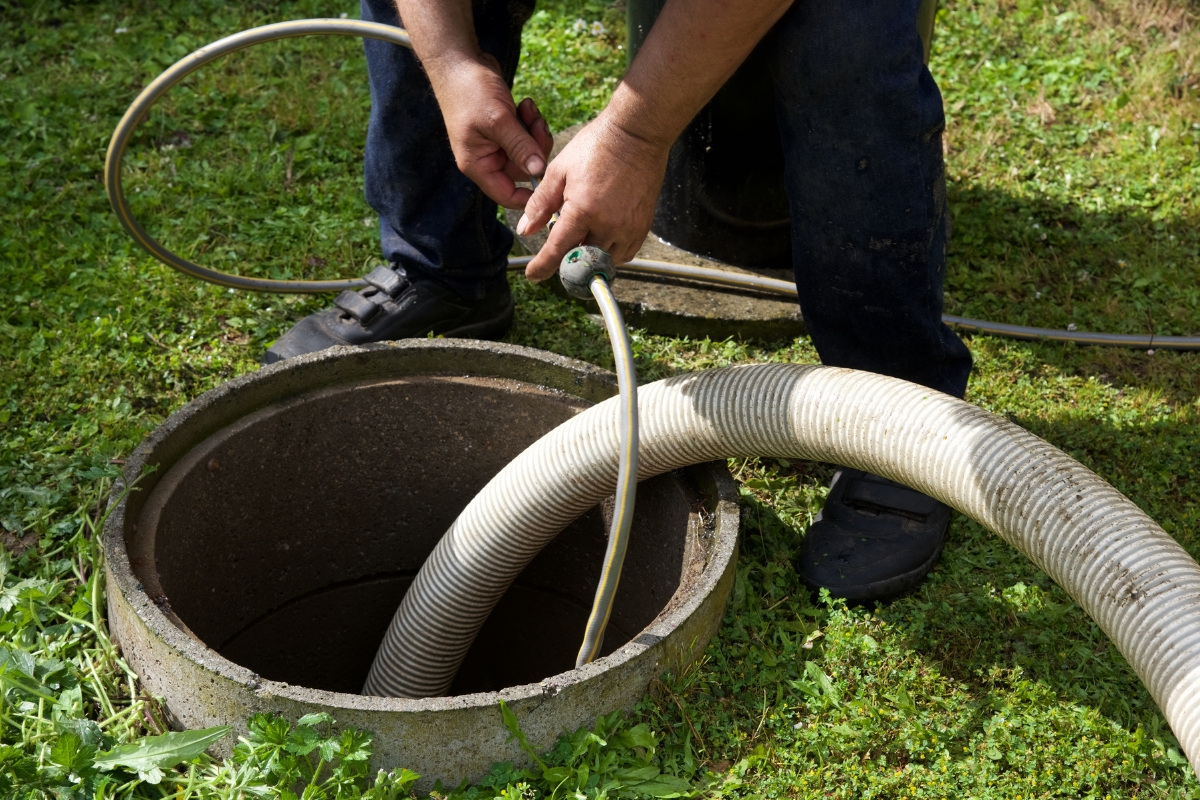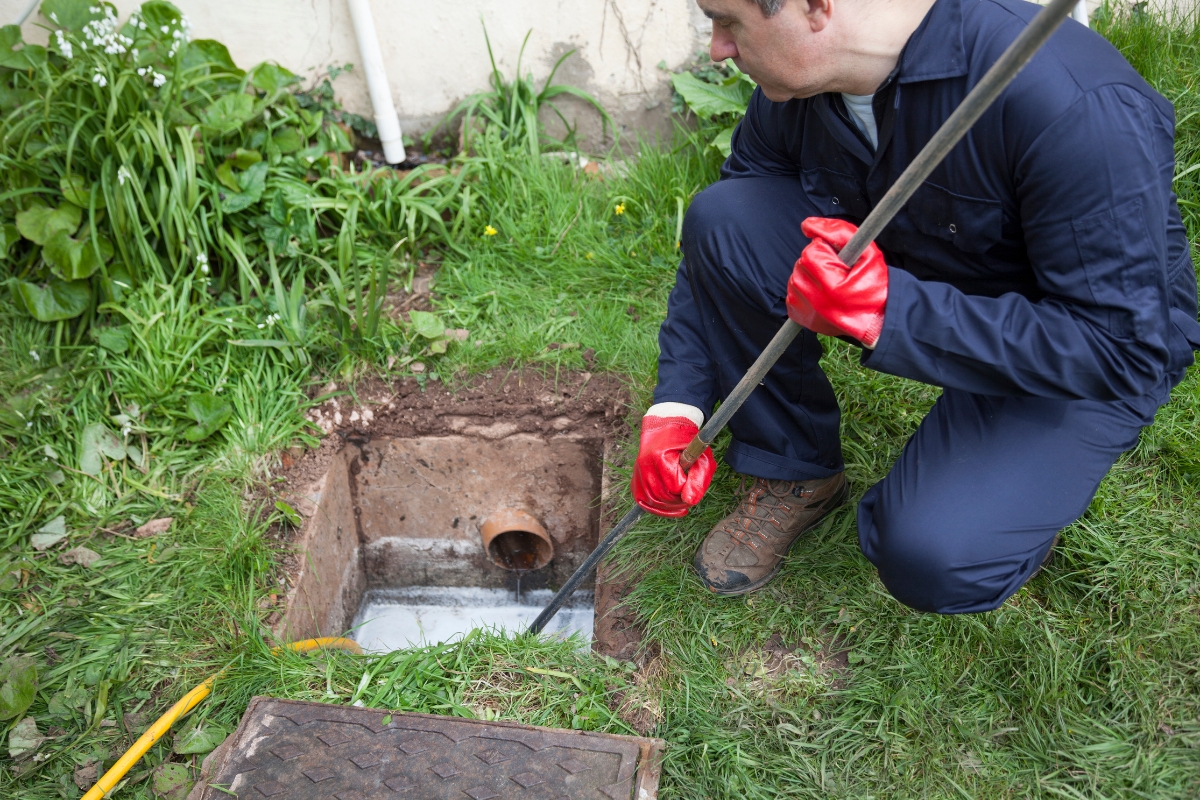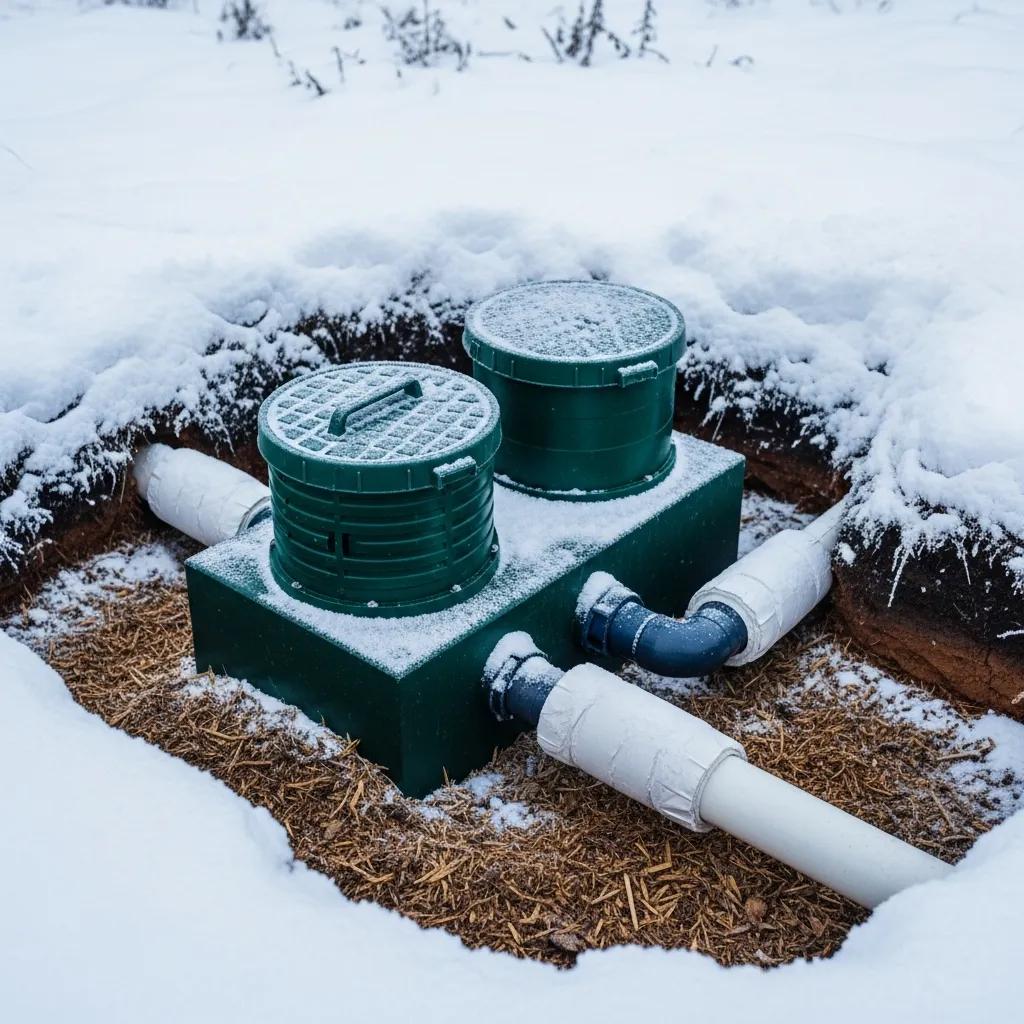Keeping your septic system in good shape is vital for your home’s health. Smart Septic Pros specializes in septic tank pumping, repairs, and installation, ensuring your system runs smoothly. The frequency of septic tank pumping can vary based on several factors, and knowing when to schedule service can save you from costly repairs down the line.
Understanding your septic tank needs doesn’t have to be complicated. Whether you’re a homeowner or a business manager, contact Smart Septic Pros for expert advice and reliable service. Keep reading to discover how often your septic tank should be pumped and the signs that indicate immediate attention is needed!
Key Takeaways for Septic Tank Pumping Frequency
How Often Should a Septic Tank Be Pumped Out?

Understanding how often a septic tank should be pumped out requires a closer look at a couple of key factors. The size of the household, along with the capacity of the septic tank, plays a critical role in determining the frequency of pumping.
Additionally, evaluating water usage patterns, including how much water is used in daily activities like cooking and laundry, can give insights into overall wastewater production. People’s waste disposal habits, such as what gets flushed down the toilet, also significantly affect how quickly a septic system fills up.
Lastly, considering the age and type of the septic system can offer clues about its efficiency and maintenance needs, all of which contribute to optimal sewage treatment. For septic tank repairs or septic tank installation, you can contact Smart Septic Pros for expert assistance.
Assessing Household Size and Septic Tank Capacity
Assessing the household size and septic tank capacity is fundamental for establishing an effective septic system maintenance schedule. Larger households typically generate more wastewater, which means homeowners need to ensure their septic tank can handle the demand without needing frequent pumping. A tank that is too small for the volume of water and waste produced can lead to issues like clogs in the pipe and inefficient filtration, ultimately disrupting the water treatment process.
- Identify household size.
- Evaluate septic tank capacity.
- Adjust maintenance schedule based on usage.
- Monitor waste disposal habits.
- Ensure adequate filtration and treatment.
Evaluating General Household Water Usage
Understanding general household water usage is essential for determining how often a septic tank requires pumping. Households that use more water typically generate more waste, which can quickly fill up a septic system.
Performing a home inspection can help identify heavy water usage habits, such as excessive flushing of items that should not go in the toilet, contributing to a “fat” buildup that necessitates septic service.
| Water Usage Activity | Daily Usage (Gallons) | Impact on Septic System |
|---|---|---|
| Showers | 20-30 | Moderate |
| Dishwashing | 10-15 | Moderate |
| Laundry | 15-50 | High |
| Flushing Toilets | 1.6-5 | Variable |
| Outdoor Watering | 30-100 | High |
Understanding the Impact of Waste Disposal Habits
Waste disposal habits significantly influence how often septic tanks need pumping. The volume of materials flushed or poured down drains impacts the overall efficiency of a system. For instance, improper items like grease or non-biodegradable products can lead to backups and increased maintenance needs, affecting not just the sump and recycling efforts, but also raising concerns about leaks and damage to the surrounding ecology.
Considering the Age and Type of Septic System
The age and type of a septic system play key roles in determining how often a tank needs to be pumped. Older systems may require more frequent maintenance due to wear and tear, while newer systems generally operate more efficiently. Understanding these factors helps homeowners prevent serious issues like backups or floods from happening, especially after heavy usage, such as long showers or during family gatherings.
For better clarity, the table below breaks down common septic tank types and their general pumping schedules:
| Septic System Type | Typical Pumping Frequency | Notes |
|---|---|---|
| Conventional | 3-5 years | Depends on household size and usage |
| Aerobic | 1-3 years | May need more frequent checks |
| Chamber System | 3-6 years | Less frequent due to design |
| Sand Filter | 2-4 years | Consider pump operation as well |
Understanding the frequency of septic tank pumping is just the beginning. Several factors come into play that can really influence how often you should schedule that service.

Factors That Determine How Often a Septic Tank Needs to Be Pumped
Understanding the factors that dictate how often a septic tank needs pumping is essential for maintaining a healthy waste management system. The type of septic tank directly affects its operational efficiency and required maintenance frequency.
Additionally, the size of the tank plays a crucial role, as a larger capacity can accommodate more waste before needing service. Household size contributes significantly to waste production, and recognizing water usage habits gives valuable insight into overall needs.
When homeowners take these factors into account, they can prevent issues that might lead to leaks or contamination of drinking water, ultimately protecting their water supply.
Type of Septic Tank
The type of septic tank installed can greatly influence how often it needs to be pumped. Certain designs, like those that incorporate advanced drainage systems, may handle household waste more effectively while minimizing clogs from items like dental floss or grease that often end up in the sink.
The United States Environmental Protection Agency recommends regular maintenance based on the specific type of system to ensure its longevity and efficiency.
Size of Your Septic Tank
The size of a septic tank is a major factor in determining how often it needs to be pumped. A larger tank can handle more waste from a busy household, but it’s important to keep in mind that any inspection should assess not just the tank size, but also how frequently the garbage disposal unit is used and the types of household chemicals that are dumped down the drain. Poor hygiene practices, like flushing wipes or other non-biodegradable items, can quickly fill up even a spacious tank, leading to the need for more frequent service.
Size of Your Household
The size of a household plays a significant role in determining how often a septic tank needs pumping. Larger families tend to use more water daily, which leads to higher amounts of effluent entering the tank. This increased volume not only fills the tank faster but also contributes to the buildup of sludge, making regular maintenance vital for ensuring that the property’s wastewater system operates efficiently.
Practicing water conservation can help manage the load on a septic system, especially when using appliances like a dishwasher or washing machine. Being mindful of water usage helps reduce the overall volume of wastewater, extending the time between necessary pump-outs:
| Household Size | Average Daily Water Usage (Gallons) | Pumping Frequency (Years) |
|---|---|---|
| 1-2 People | 50-70 | 4-5 |
| 3-4 People | 70-100 | 3-4 |
| 5+ People | 100-150 | 2-3 |
Your Water Usage
Water usage significantly impacts how often a septic tank should be pumped. Higher liquid waste from daily activities increases the volume of sewage entering the tank, which can lead to faster accumulation of both solid waste and sludge.
Furthermore, flushing items such as medication down the toilet can create additional strain on the system, prompting the need for more frequent pump-outs to ensure optimal performance and prevent backups.
Knowing how often to pump your septic tank is vital for proper maintenance and cost savings. Check out our septic tank pump chart for a handy schedule that keeps things running smoothly!

Septic Tank Pump Chart: A Schedule Guide
Understanding the schedule for septic tank pumping is vital for keeping a system functioning well. Interpreting septic tank pumping charts reveals important frequency recommendations based on household size and the tank‘s capacity. Homeowners can also adapt these schedules to fit their specific needs, accounting for factors like the amount of biodegradable waste produced and the use of fixtures like sump pumps.
Regular monitoring and maintenance checks allow residents to keep an eye on soil conditions and spot potential issues early, preventing expensive problems later on. Staying attentive means less boiling water and more peace of mind when it comes to managing wastewater effectively.
Interpreting Septic Tank Pumping Charts
Interpreting septic tank pumping charts helps homeowners gauge the right timing for service. By analyzing these charts, they can better understand their system’s needs based on the amount of toilet paper and litter that ends up in the tank, as well as any oil or food waste that gets thrown down the drain. Recognizing these factors early can prevent unwanted odors and potential failure of the septic system.
To ensure effective maintenance, pay attention to these key points when using a pumping chart:
- Monitor your household‘s wastewater habits.
- Take note of the volume of oil and litter disposed of.
- Track any unusual odors that signal system issues.
- Stay aware of potential failure signs in your system.
Adjusting the Schedule for Your Specific Needs
Adjusting the septic tank pumping schedule to meet specific household needs can lead to better waste management. Homeowners should consider the amount of organic matter being generated in their daily routines, as this directly affects when the tank fills up. Staying proactive allows for timely pumping and helps prevent issues like backups.
- Monitor your household‘s water usage.
- Consider the amount of organic matter generated.
- Adjust the service frequency based on specific habits.
- Keep an eye on any troubling signs like odors.
- Communicate with a septic service provider for tailored advice.
Regular Monitoring and Maintenance Checks
Regular monitoring and maintenance checks and septic tank cleaning services play a crucial role in preserving the health of a septic system. Homeowners can catch potential issues early by keeping an eye out for unusual odors or slow drains, which often signal a problem developing within the tank. Scheduling routine maintenance visits with a septic service provider ensures that the system operates smoothly and efficiently, helping avoid costly repairs down the line.
Timing isn’t everything when it comes to septic tank maintenance. Let’s dig into the factors that can influence your service intervals and keep your system running smoothly!

What Variables Affect Septic Tank Service Intervals?
When it comes to maintaining a septic system, several variables can affect how often a tank needs to be pumped. Household habits play a significant role, as daily routines can lead to varying levels of wastewater production. The use of septic tank additives also comes into play, with some helping to break down solid waste more efficiently while others might cause buildup that requires more frequent servicing.
Additionally, environmental factors, such as soil conditions and local water tables, can influence the system’s functioning and subsequently affect pumping schedules. Understanding these elements by performing a septic percolation test helps homeowners make informed decisions about their septic maintenance needs.
Household Habits Influencing Service Frequency
Household habits play a significant role in determining how often septic tanks require pumping. Simple choices, like the frequency and types of laundry done or how much water is used in daily tasks, can contribute to variations in wastewater production. More frequent flushing of unsuitable items or overuse of garbage disposals can also lead to quicker accumulation of solids, increasing the need for servicing.
It’s important to monitor daily practices and make adjustments where necessary. For instance, reducing water usage in certain areas or being mindful of what goes down the drains can help extend the time between pumpings:
- Limit flushing non-biodegradable items.
- Use water-saving appliances.
- Practice mindful waste disposal.
- Track daily water usage.
- Adjust habits based on seasonal needs.
The Role of Septic Tank Additives and Their Effects
Septic tank additives can significantly influence the frequency of pumping by altering how efficiently waste breaks down in the system. Some products may expedite the decomposition of solid waste, potentially reducing the buildup that necessitates more regular service. However, homeowners should be cautious, as certain additives might cause issues by creating sludge that leads to increased maintenance needs instead.
Environmental Factors and Their Impact on Pumping Schedules
Environmental factors can play a significant role in determining how frequently a septic tank needs pumping. For instance, soil type can affect how quickly wastewater breaks down; sandy soils allow for better drainage, while clay soils may retain water and slow down the process. Additionally, the local water table can rise and fall, impacting how well a septic system functions, so homeowners should keep an eye on these factors to maintain optimal performance.
Recognizing the right service intervals is only half the battle. Keep an eye out for specific signs that your septic tank demands immediate attention!
Signs Your Septic Tank Needs Immediate Pumping

Recognizing the signs that indicate a septic tank is nearing its capacity is key for homeowners looking to maintain an efficient system. Common warning signs, such as slow drains, unpleasant odors, or standing water above the tank, can signal that intervention is required. Upon noticing these indicators, prompt action becomes necessary to prevent serious issues like overflow or backups.
Additionally, taking proactive steps can help extend the intervals between pumpings, ensuring the septic system runs smoothly for years to come. Keeping these aspects in mind allows homeowners to manage their septic systems more effectively.
Identifying Warning Signs of a Full Septic Tank
Homeowners should be on the lookout for specific signs that indicate a septic tank may be full. Slow drainage in sinks or toilets can suggest that the system isn’t functioning properly. Unpleasant odors around the tank area or any standing water in the yard can be definite clues that a septic pumping is necessary.
Here are some common warning signs to help identify when a septic tank needs attention:
| Warning Sign | Description |
|---|---|
| Slow Drains | Fixtures like sinks and toilets take longer to drain than usual. |
| Bad Odors | Foul smells near the septic tank or in the home. |
| Standing Water | Visible pooling or sogginess above the septic system. |
Immediate Steps to Take When Signs Appear
When signs of a full septic tank emerge, homeowners should take immediate action to avoid further complications. Calling a professional septic service provider at the first indications ensures a quick assessment and necessary steps for pumping. Delaying can lead to more severe problems, such as backups or costly repairs, so prompt attention is key to maintaining an efficient system.
Preventative Measures to Extend Time Between Pumping
Homeowners can take simple steps to help delay the need for septic tank pumping. Reducing water usage is one effective strategy; for example, fixing leaks and installing low-flow fixtures can significantly cut down on the volume of wastewater produced. Additionally, being mindful about what gets flushed or poured down the drain prevents unnecessary buildup, allowing the septic system to operate more efficiently.
A well-timed pumping schedule can save you from unexpected headaches. Get ready to take control and keep your septic system running smoothly!

Setting Up Your Septic Tank Pumping Schedule
Establishing a pumping schedule for a septic tank begins with calculating an initial timeline based on the size of the tank and the household‘s needs. This foundational step ensures that homeowners set appropriate intervals to keep their systems running smoothly.
As water usage habits evolve—perhaps due to changes in family size or lifestyle—adapting the pumping schedule is crucial to prevent potential issues. Regular professional assessments also play a vital role, giving homeowners expert insights on their septic system’s health and helping refine the pumping schedule as needed.
Calculating an Initial Schedule Based on Tank and Household Size
Calculating an initial schedule for pumping a septic tank begins with assessing the tank size in relation to the household size. Smaller households with a standard-sized septic tank may find that a pumping interval of four to five years is sufficient, while larger families might need to schedule pumping every two to three years to keep the system functioning well. Homeowners should also consider their unique water usage habits, as adjustments may be necessary when routines change.
Adjusting the Schedule Over Time With Usage Changes
Adjusting a septic tank pumping schedule is crucial when household habits shift. Changes in family size or water usage can significantly affect how often a tank needs service. Homeowners should keep an eye on their routines and adjust the schedule accordingly to ensure optimal performance.
Factors such as new appliances, seasonal changes that affect water use, or increased laundry can require more frequent maintenance. Regular check-ins allow homeowners to assess their needs and make necessary changes without waiting for problems to arise:
| Usage Change | Impact on Pumping Frequency |
|---|---|
| New Family Member | Increase in wastewater; may require more frequent pumping |
| High Water Use Appliances | Higher liquid waste; schedule adjustments may be needed |
| Seasonal Water Use Fluctuations | Summer gardening vs. winter water use; monitor and adapt |
Importance of Professional Assessments in Scheduling Pumping
Professional assessments are vital for creating an effective septic tank pumping schedule. Experts can provide insights into system performance, identify potential issues, and recommend the best intervals for service based on current conditions. Regular check-ups ensure the system remains in optimal working order, preventing unnecessary problems down the line:
- Expert evaluation of tank condition.
- Identification of signs requiring urgent care.
- Customized recommendations based on unique household needs.

Schedule Your Septic Tank Pumping Maintenance Today
Determining your septic tank pumping frequency is crucial for maintaining a healthy waste management system. By understanding household size, water usage, and waste disposal habits, homeowners can significantly extend the life of their septic systems. Regular assessments help identify potential issues early, preventing costly repairs and backups. Taking proactive steps ensures efficient operation and protects both the property and the environment.
If you’re looking for septic tank pumping maintenance in Kennesaw, Acworth, Marietta, or the metro Atlanta area, reach out to Smart Septic Pros now to schedule your septic tank pumping service. With our expertise in septic systems maintenance, we ensure your system runs efficiently. Avoid costly repairs by regularly pumping your septic tank. Don’t wait until problems arise; proactive maintenance is key. Trust Smart Septic Pros to handle the job professionally and promptly.



